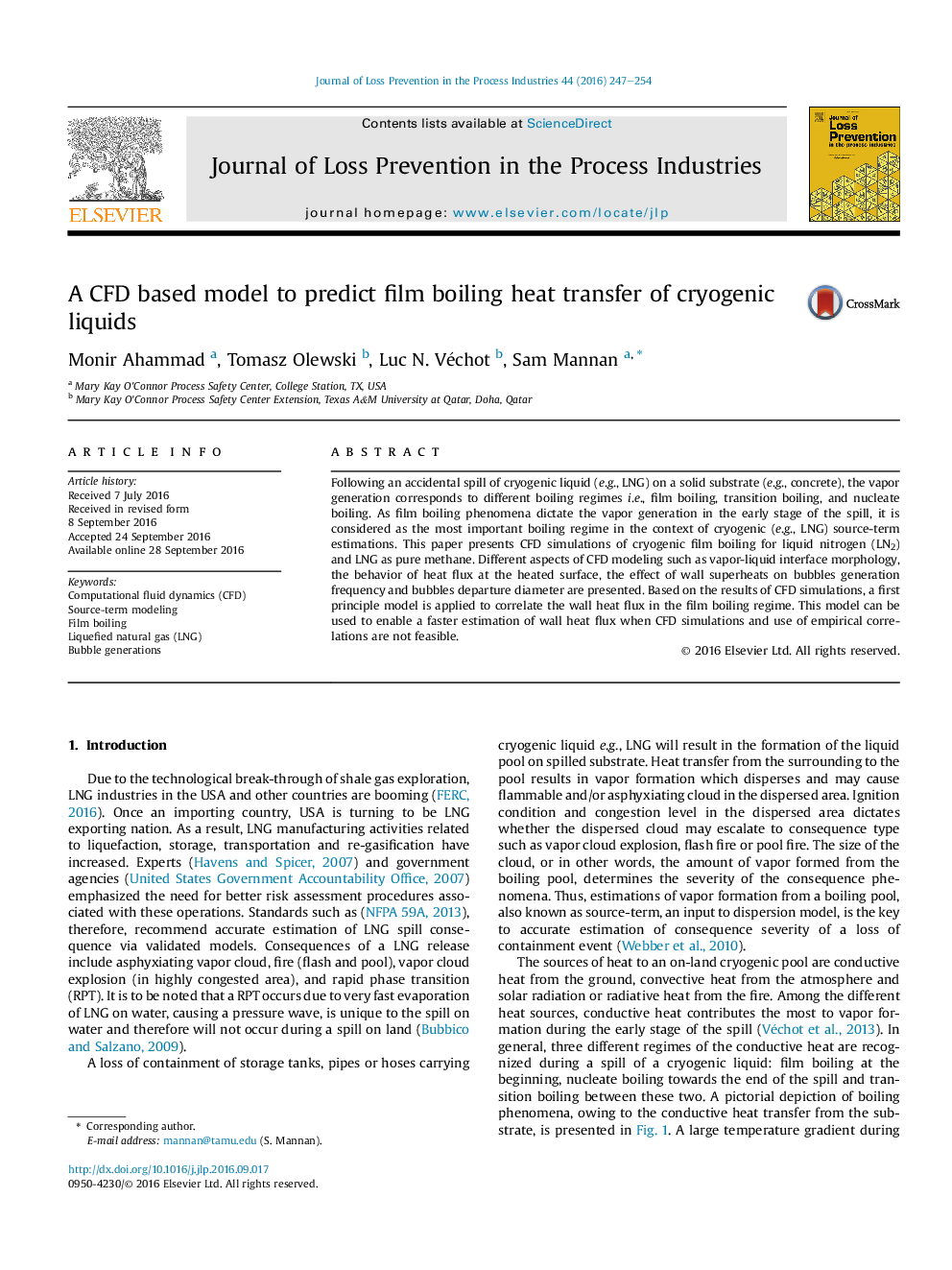| Article ID | Journal | Published Year | Pages | File Type |
|---|---|---|---|---|
| 4980457 | Journal of Loss Prevention in the Process Industries | 2016 | 8 Pages |
Abstract
Following an accidental spill of cryogenic liquid (e.g., LNG) on a solid substrate (e.g., concrete), the vapor generation corresponds to different boiling regimes i.e., film boiling, transition boiling, and nucleate boiling. As film boiling phenomena dictate the vapor generation in the early stage of the spill, it is considered as the most important boiling regime in the context of cryogenic (e.g., LNG) source-term estimations. This paper presents CFD simulations of cryogenic film boiling for liquid nitrogen (LN2) and LNG as pure methane. Different aspects of CFD modeling such as vapor-liquid interface morphology, the behavior of heat flux at the heated surface, the effect of wall superheats on bubbles generation frequency and bubbles departure diameter are presented. Based on the results of CFD simulations, a first principle model is applied to correlate the wall heat flux in the film boiling regime. This model can be used to enable a faster estimation of wall heat flux when CFD simulations and use of empirical correlations are not feasible.
Related Topics
Physical Sciences and Engineering
Chemical Engineering
Chemical Health and Safety
Authors
Monir Ahammad, Tomasz Olewski, Luc N. Véchot, Sam Mannan,
